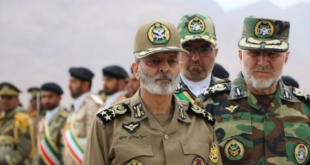The Russian government has issued a formal statement about the start of naval exercises in the Baltic Sea. The Russian Navy has played a crucial role in Moscow’s military operations against Ukraine by using ship- and submarine-based cruise missiles and other weaponry to specifically target the country. This phenomenon has transpired amidst the mounting tensions between Russia and its European counterparts, primarily arising from the protracted situation in Ukraine.
A complete plan has been developed to implement more than 200 combat exercises, including the use of weapons inside the training. The Ocean Shield-2023 exercises will include the involvement of military forces that are actively involved in executing tactics to protect marine routes, enabling the transfer of troops and military equipment, and strengthening coastal defense. The operation is anticipated to include a combined fleet of 30 warships and boats, together with 20 support vessels, escorted by around 6,000 military personnel. Russia often engages in naval drills in the Baltic Sea, typically in response to the occurrence of NATO exercises in the area.
Nevertheless, in 2022, Russia exhibited a robust reaction in response to the deployment of NATO forces inside the Baltic area. Russia conducted extensive military drills in the Baltic Sea region and near the borders of the Baltic nations and Poland to showcase its military capabilities and preparedness to effectively respond to any potential NATO aggression or intervention. Russia has further implemented offensive weaponry in the region, including missiles capable of carrying nuclear warheads, anti-aircraft systems, electronic warfare systems, and submarines, to establish a fortified defensive position and deter any threats.
Additionally, it is important to note that Russia has strategically placed the Iskander-M short-range ballistic missile system in Kaliningrad, an outpost between Poland and Lithuania. This particular missile system can effectively engage targets within a range of 500 kilometers. Also, Russia has made allegations against the United States and its Western counterparts, claiming that they have infringed upon the rights of ethnic Russians and other minority groups, assisted neo-Nazi organizations, maintained US nuclear weaponry, and intervened in the internal affairs of Belarus.
Over time, NATO has implemented many measures in response to Russia’s military exercises in the Baltic Sea region to safeguard its European partners. Initially, NATO engaged in drills and patrols inside the area as a means to demonstrate unity and deterrence in support of Ukraine. In June 2022, NATO conducted the BALTOPS 22 exercise, which brought together a total of 18 countries, 40 ships, 60 aircraft, and around 4,000 troops.
NATO has established a consistent deployment of air, naval, and ground troops in the Baltic states and Poland via its Enhanced Forward Presence strategy. This measure is undertaken as a precautionary response to the potential threat of another incursion from Belarus, a country aligned with Russia. Furthermore, the actions of Russia have received condemnation from NATO members, who have emphasized the need for engagement and de-escalation in the area.
The NATO Secretary General, Jens Stoltenberg, called upon Russia to demonstrate responsible behavior, transparency, and adherence to international legal norms. Additionally, NATO has demonstrated its commitment to upholding the security and sovereignty of its partners and allies in the region, with a focus on Ukraine, which is currently facing a military attack from Russia.
Additionally, NATO has extended political and practical assistance to Ukraine, including several forms of aid including training, military weapons, advisory services, and financial support. NATO has reiterated its commitment to upholding the territorial integrity and independence of Ukraine while denouncing Russia’s unlawful annexation of Crimea.
Amidst the prevailing geopolitical circumstances in Europe, the Russian government is now engaging in military exercises inside the Baltic Sea region. Russia is now engaged in the training of its armed forces to enhance their operational effectiveness in various challenging environments. The Baltic Sea presents a multifaceted setting for naval operations due to its characteristics, including shallow depths, tight passages, the presence of islands, and the existence of coastal fortifications. Additionally, efforts are being made to foster seamless coordination between different components of the military, including the air force.
The exercises further provide Russia with the opportunity to conduct experiments using new weaponry and technology, including cruise missiles, submarines, and electronic warfare systems, with the potential for future deployment against Ukraine. Presently, Russia is exhibiting its military might and preparedness to neighboring countries and adversaries, particularly NATO and the European Union. Russia perceives the development and establishment of NATO in the Baltic area as a potential threat to its security and strategic concerns.
Through the implementation of naval exercises, Russia effectively demonstrates its capability to safeguard its territorial boundaries and support its allied nations while simultaneously posing a threat to the prevailing influence of NATO within the region.
Furthermore, Russia seeks to assert its power and pursue its interests in the area, particularly in the Nord Stream 2 pipeline project, after the bombing incident that occurred in 2022. The Nord Stream 2 gas pipeline project aimed to provide a direct connection between Russia and Germany across the Baltic Sea, therefore circumventing the territories of Ukraine and Poland. Following Russia’s aggression against Ukraine, the project has encountered opposition from Germany, the United States, and many European allies. Russia has shown its commitment to protecting its interests in the area by engaging in naval exercises along the pipeline route.
This military exercise has the potential to provide strategic advantages to Russia across several dimensions. To begin with, it is noteworthy that Russia is now exerting its influence and establishing a prominent presence in the Baltic Sea. This particular area has significant importance for Russia due to its trade, energy, and security concerns. Russia’s use of live-fire exercises serves as a demonstration of its proficient utilization of naval assets to safeguard its territorial integrity.
Russia is attempting to exploit Europe’s energy security and political landscape. Russia’s recent naval maneuvers near the pipeline route serve as a clear indication of its unwavering commitment to establishing a connection between its energy infrastructure and Europe, even in the face of sanctions and diplomatic pressure.
The Baltic Sea has significant strategic value for both NATO and Russia due to its role in facilitating access to crucial markets, energy resources, and security alliances. Hence, both parties need to demonstrate self-control and acknowledge one another’s interests and rights. In response to Russia’s military drills in the Baltic Sea region, NATO has employed a variety of strategies.
Nevertheless, the current state of affairs continues to be characterized by heightened tension and an inherent lack of predictability, given that all parties involved have made accusations against one another about the exacerbation of the conflict. Russia is actively endeavoring to capitalize on the divide and weaknesses present inside NATO and the European Union while simultaneously establishing alternative alliances and relationships with other nations. One such instance is Russia’s attempts to undermine the transatlantic alliance between the United States and Europe, foster collaboration with China in matters about both economic and security domains, and engage in mediation efforts about conflicts such as those seen in Syria and Libya.
In conclusion, there are many potential rationales for Russia’s naval exercises conducted in the Baltic Sea. The exercises possess repercussions and ramifications for regional stability and security, as well as for the dynamics of international relations between Russia and other nations.
 Eurasia Press & News
Eurasia Press & News




